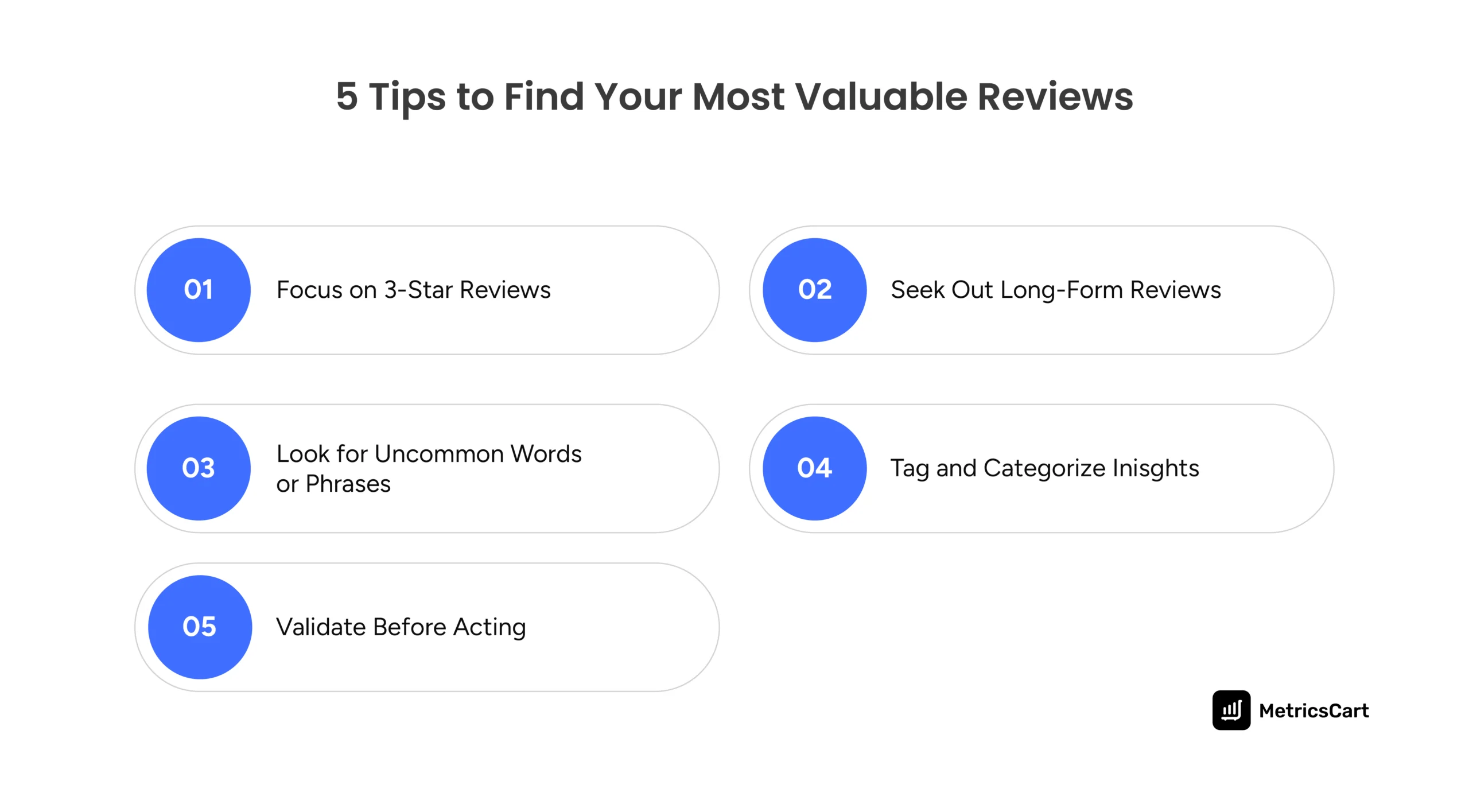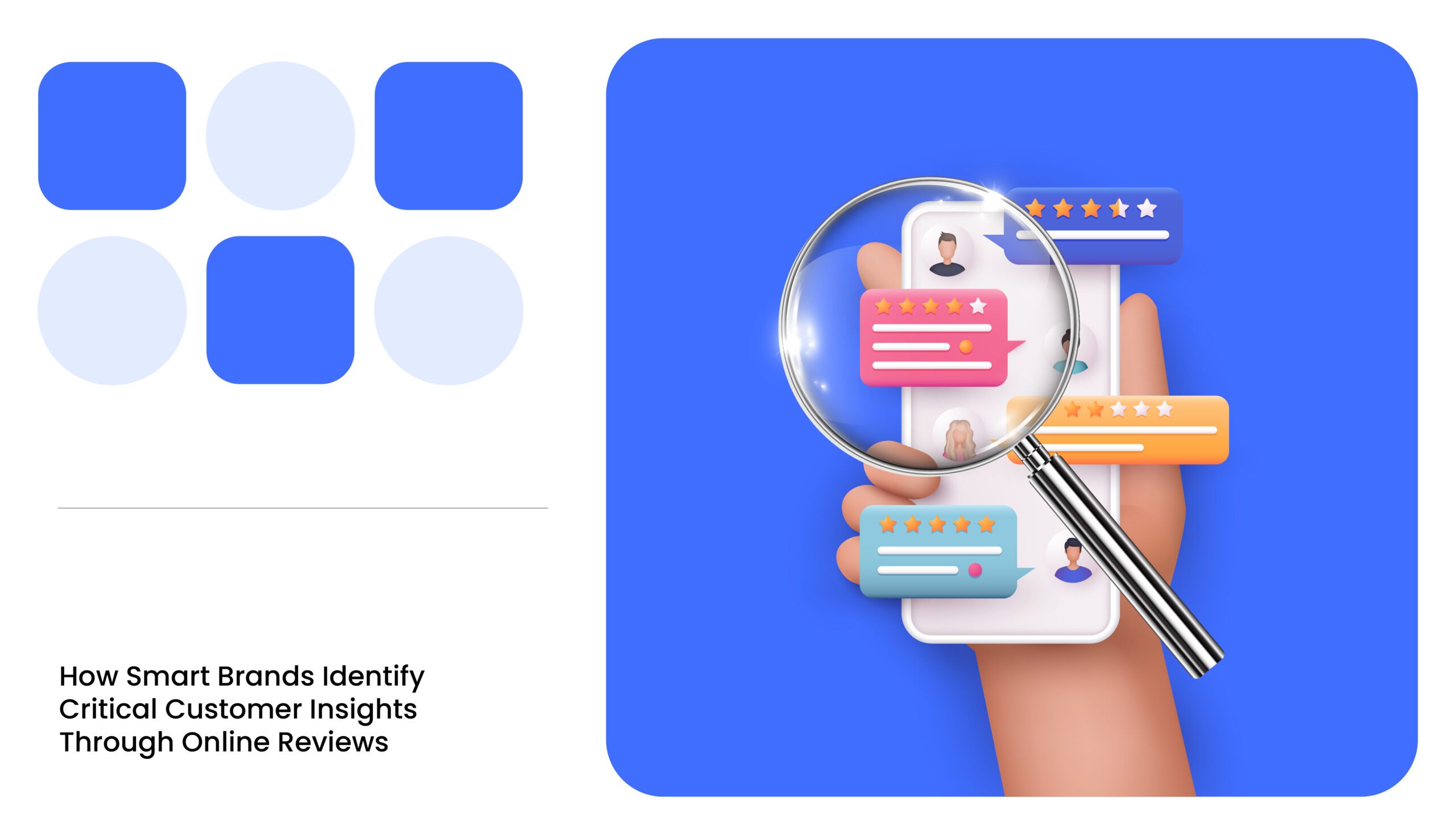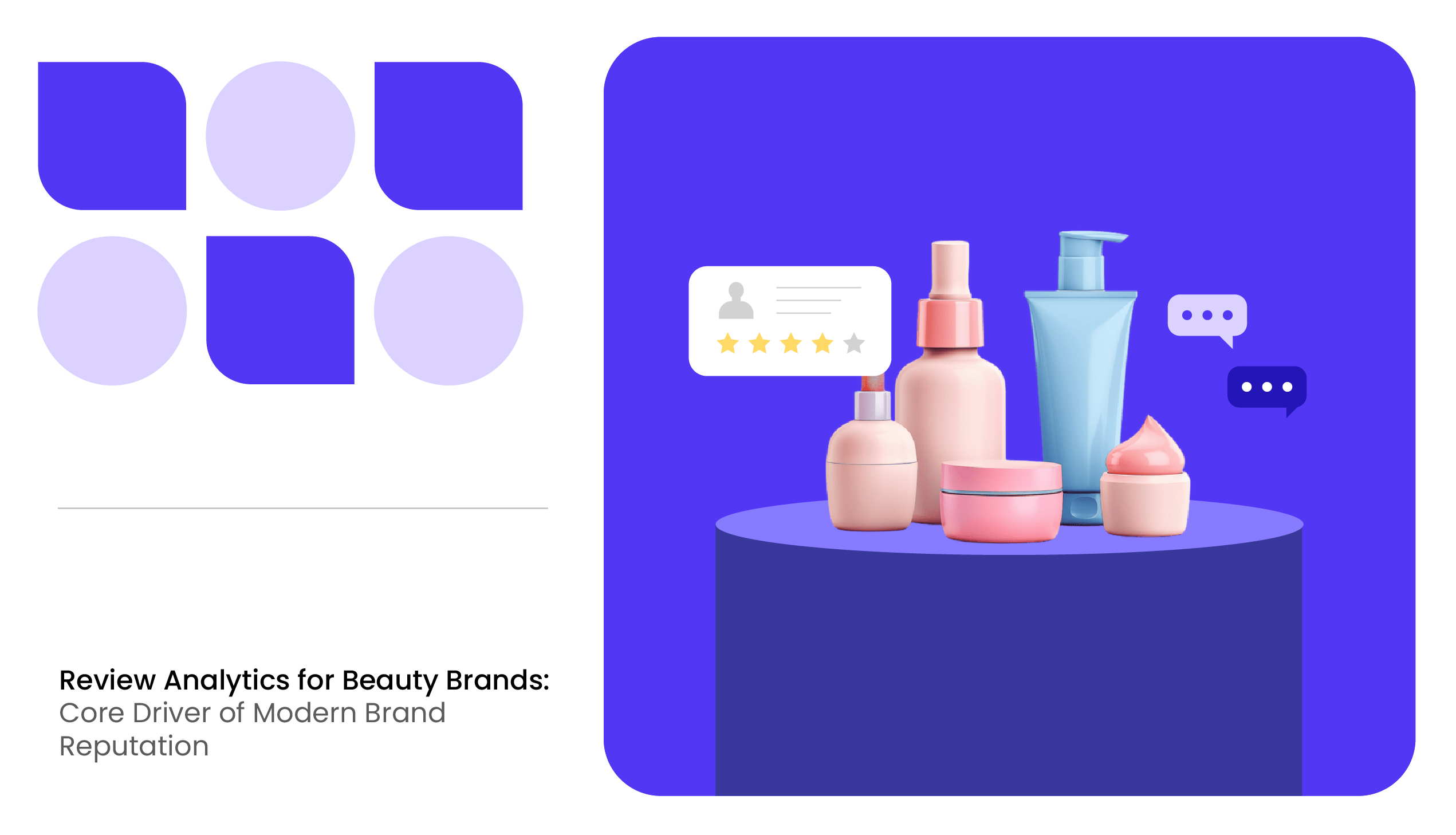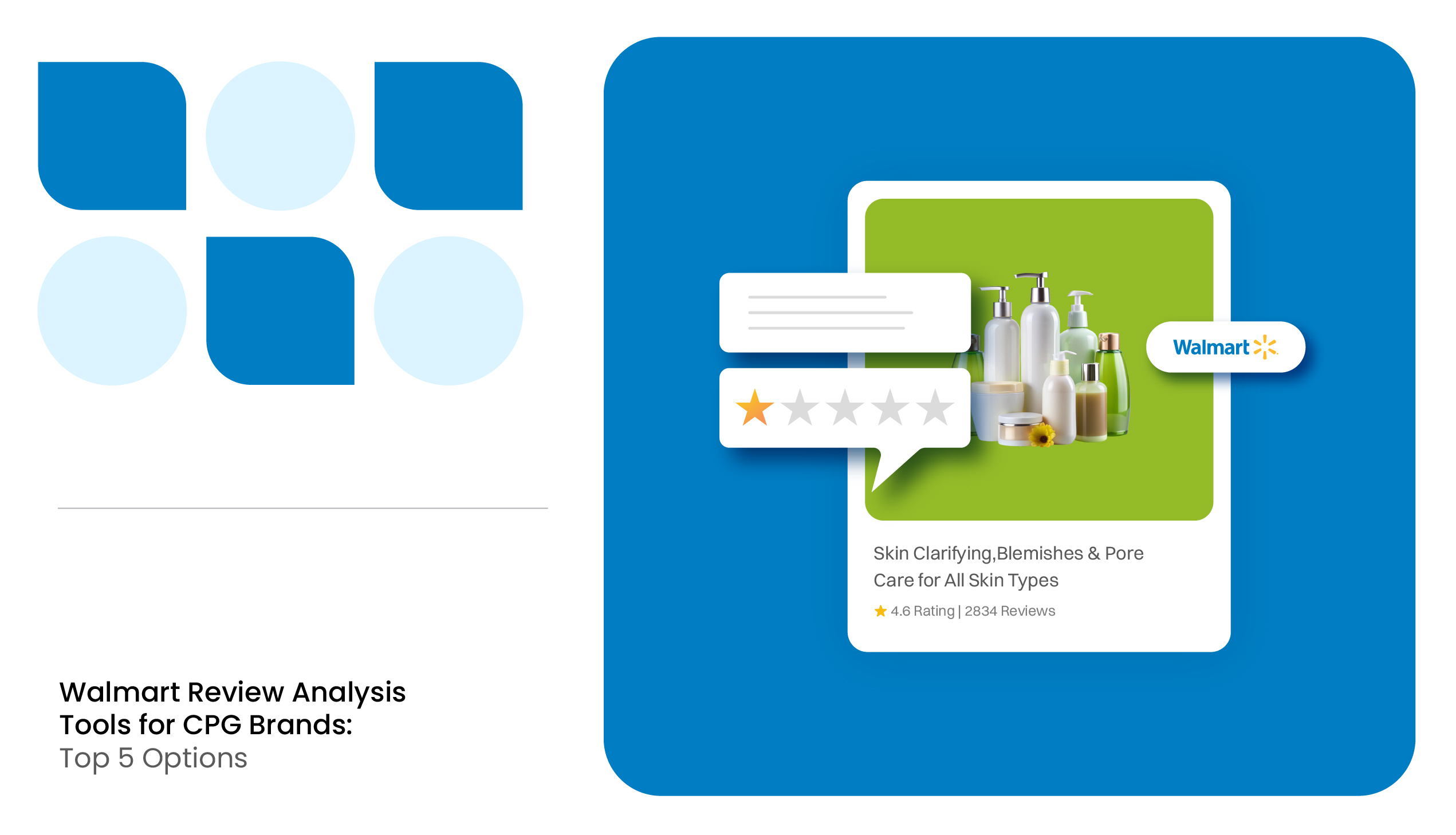A recent study, “Product design opportunity identification through mining the critical minority of customer online reviews,” published in Electronic Commerce Research, reveals a fascinating reality. While customer reviews are abundant, only a small fraction of the critical minority actually helps identify critical customer insights for product innovation.
For anyone steering a brand in today’s crowded digital shelves, this discovery can change the way we think about customer feedback analysis forever.
One of the biggest pitfalls for brands is assuming that more data equates to better insights. Thousands of reviews pouring in might make a dashboard look impressive, but when you drill into what people are saying, much of it can be boiled down to surface-level observations like “Loved it!” or “Bad packaging.”
These statements may influence a future customer’s decision to make a purchase. Still, they rarely provide the detailed, specific feedback a brand or growth manager needs to improve a product or identify genuinely unmet needs.
Instead, the study suggests, genuine opportunity lives within the rare, well-thought-out comments that stand apart from the crowd.
Every e-commerce brand today knows the value of user-generated content. They boost credibility, drive conversions, and shape consumer perception at every digital touchpoint.
How brands find customer insights can be a tricky job, as they are buried within thousands of reviews. Some clues could define their next breakthrough product.
While many reviews reinforce what you already know, a select few, a critical minority, contain the ideas that can genuinely push your product forward.
For e-commerce professionals and brand managers seeking to stay competitive, tapping into this critical minority is not just desirable but essential for long-term success and innovation. An all-around review monitoring solution can ease the load of tracking and analyzing online reviews.
Why Most Brands Miss the Real Insights?
Let’s be honest: the average customer review doesn’t go beyond surface-level satisfaction or frustration. If you’re managing hundreds, even thousands, of reviews, it’s tempting to summarize customer sentiment with a simple scorecard: 4.5 stars overall, 80% positive, a few complaints about shipping.
But volume isn’t the same as insight. In fact, the more reviews you get, the more your data risks becoming repetitive and safe. Brands often end up reinforcing what they already believe, instead of discovering the blind spots and opportunities that lie at the edges of customer conversations.
Product innovation doesn’t live in the majority. It lives in the margins, in those handful of reviews where a customer says:
“I wish it came in a smaller size.”
“This would be perfect if it worked with my smart home system.”
“It would be great if you offered a vegan version.”
These reviews are gold, but they’re hard to spot without the right ecommerce product review analysis platform in place.
READ MORE | How can thematic review analysis improve review tracking? Check out our blog Power Up Your Business With Thematic Review Analysis: A Brand Guide.
How Brands Can Identify Critical Customer Insights?
Today’s most innovative brands treat their review sections not just as a trust-building tool, but as an ongoing product development lab.
Instead of only tracking sentiment or keyword frequency, they actively seek out unique themes and sub-themes; those rare moments when a customer voices an unmet need, suggests an improvement, or describes a new use case for an existing product.
Some brands have entire teams dedicated to this. These teams are powered by technology platforms like MetricsCart, which provides advanced review monitoring and analysis that facilitate the process of sifting through noise and identifying actionable insights.
MetricsCart enables brands not only to monitor star ratings but also to identify emerging themes, detect anomalies in feedback, and detect early signals that could indicate product design opportunities. Many CPG brands we’ve partnered with have gained significant value, seeing up to 3x more insights through our brand comparison and trend analysis features.
Rather than relying on gut feeling or occasional surveys, this approach would empower brands to build a systematic, data-driven approach to customer-led innovation and brand reputation management.

Practical Tips for Discovering Your Critical Minority Reviews
Even if you’re just starting out and don’t have a massive team or deep analytics resources, there are steps you can take immediately:

Focus on 3-Star Reviews
Often, the most balanced and honest among other reviews, the three-star reviews highlight both what is working and what is not.
Seek Out Long-Form Reviews
Customers who take the time to write detailed feedback typically have something meaningful to share beyond simply saying “Great product!”
Look for Uncommon Words or Phrases
If a reviewer mentions something that few others do (such as a niche feature request or an unexpected use case), pay attention to those by sorting them into themes and sub-themes.
Tag and Categorize Insights
Whether manually or with review tracking tools like MetricsCart, organize review insights into buckets: Potential Improvements, Unmet Needs, and New Ideas.
Another key feature is identifying and classifying consumer emotions from both positive and negative reviews, unlocking valuable insights that drive product innovation.
Validate Before Acting
Not every idea is worth pursuing. But if you spot patterns across even small groups of customers, it’s worth exploring further with quick polls, beta tests, or soft launches.
Mining the critical minority of reviews doesn’t just fuel better products. It can also spark smarter marketing. When customers organically describe your product as solving a specific problem, especially one you haven’t heavily marketed, it opens up new positioning angles.
For example, your hydration product isn’t just for athletes; it also helps solve problems for busy office workers. Maybe your vegan snack is attracting people with allergy concerns.
Understanding these organic customer perceptions enables you to fine-tune your messaging, enhance ad targeting, and create content that resonates authentically with genuine buyers.
READ MORE | Want to get more reviews from your customers? Check out our blog on How to Get More Reviews: 7 Tips to Improve Product Ranking.
Conclusion: The Future Belongs to the Brands That Listen Differently
In a digital marketplace where everyone has access to ads, social media, and fast shipping, finding customer insights for brands might become your ultimate competitive edge.
The brands that will lead in the next decade aren’t just those with the best ad creatives or the flashiest influencer campaigns.
They’re the ones who turn customer feedback from a vanity metric into a strategic resource for continuous improvement and innovation.
By focusing on the critical minority of customer reviews and utilizing a review tracker like MetricsCart to streamline the process, e-commerce brands can stay close to their audiences, identify opportunities more quickly, and develop products that people didn’t even know they were waiting for.
Your next big product idea might already be sitting quietly in a review. The only question is: Are you listening closely enough to hear it?
Unlock the Power of Customer Feedback. Drive Growth and Improve Your Business.
FAQs
Star ratings alone don’t reveal why customers feel the way they do. You’re likely missing opportunities for product innovation if you’re not analyzing the detailed feedback within the reviews.
Consider using a review monitoring and analysis platform, such as MetricsCart. These tools can help you automate the process of identifying key insights from a large volume of reviews.
The ROI comes from identifying unmet customer needs and developing new product features or even entirely new products. This innovation can give you a significant competitive advantage.
Create a straightforward process for sharing review insights with your product development team. Regularly review and prioritize the feedback to inform your product roadmap.
Go beyond fundamental analysis to identify unique themes, unmet needs, and new use cases described by customers. Look for the “I wish it had…” type of comments.
Ask specific questions in your review requests, such as “What did you like most about the product?” or “What could we improve?”. Consider offering incentives for detailed reviews.






